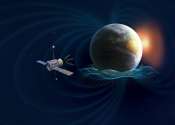Coming in hot: NASA's Chandra checks habitability of exoplanets
Using NASA's Chandra X-ray Observatory and ESA's (European Space Agency's) XMM-Newton, astronomers are exploring whether nearby stars could host habitable exoplanets, based on whether they emit radiation that could destroy ...









